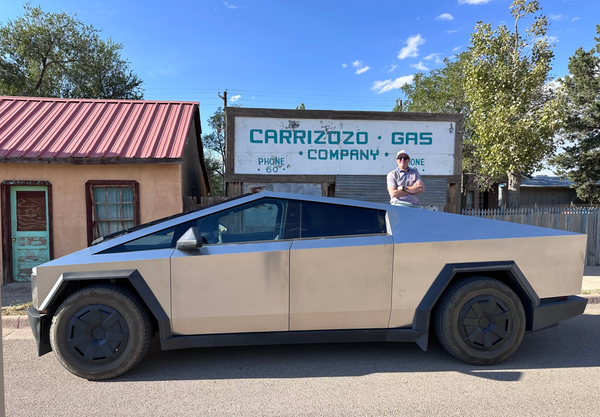Bubbles blowing in the economy
Yesterday on TradingWithCody, I wrote about investing for the coming bubble . Don’t Fight The Fed has become Don’t Fight The Ben.
Even with corporate cash at all-time highs, margin expansion, a stock market back near the peak, none of it seems to deter the Chairman from keeping rates below rock-bottom. So the “rational” investor, seeing the zero-returns of parking his cash in “risk-free” assets levers up and buys anything with yield. Let’s take a look at a couple areas where the New Bubble is forming and how we’re playing them.
Private firms are rapidly turning single-family homes into a new asset class, moving away from parceling out the debt to private to owning the equity outright. Blue-chip investors like Columbia University and CALPERS are piling millions into firms like Waypoint Real Estate Group LLC that buy foreclosed properties wholesale and rent them out, sometimes to the same families that were foreclosed on (see their promotional “Waypoint Success Story #1” YouTube video).
And after taking billions in bailouts to support the trillions on their balance sheet and foreclosing on millions of families, Bank of America has found a really nice way to get around the prop trading ban of Dodd & Frank by starting their own foreclosure-to-rent program , a nice shadow way to get into the REIT business. Why let the money managers have all the fun?
So when the co-founder of Waypoint (whose partner is an ex-NFL kicker) exclaims “I never thought I’d be rolling up single-family homes. But the yields are awesome,” there’s some kind of bubble either forming or popping in front of us. As I’ve said before I think buying real estate, especially if you can get financing and a property 50% off peak valuation is a pretty good bet. And that caveat “if you can get financing” is why we’re short names like PNC Financial Services Group PNC -1.38% PNC and MBIA MBI -0.53% that don’t get a clean slate and still have to deal with the mess of the last housing bubble.
Looking at MBIA, our most recent, it’s clear that they are totally insolvent ; the market seems to be recognizing this as well — the broader indexes are up 12% YTD and MBIA is down 18%. This thing is starting to break and I bet I’m going to push the position in the next couple quarters.
In January of last year Larry Kudlow asked if Helicopter Ben was to blame for the riots in the streets of the Middle East and at least the fomenting of the Arab Spring. The point seems prescient and applicable to commodities at large. Our incredibly efficient and hugely subsidized farm system provides food not only to our over-nourished citizens but to much of the world. Inflation is running at double digits in the BRIC economies and is taking a huge bite out of growth. Massive economies like India are seeing their central bank policies rendered impotent as anything dollar denominated takes off. The infrastructure that is feeding the commodity boom is being snapped up by private players like Glencore, who have struck a $6.1 billion deal to buy grain handler Viterra. So I’m staying long the $DBA, as a long-term hedge/play on booming commodity prices.
And the boom in tech valuations I’ve been predicting for the last five years is in full-on ramp up mode. The most dangerous phrase isn’t ‘This Time It’s Different’, rather ‘This Time It’s Totally Different’. The infrastructure that was built out for the first Tech Bubble is enabling startups to actually have revenues this go-round. But you have to look companies like Dollar Shave Club as part of the Pets.com tradition, a nimble Internet company trying to disrupt enormous, entrenched rivals (in this case Procter & Gamble) by selling direct and skipping retail channel and cutting out billions in marketing costs. All well and good and it will probably fly but raising $1 million to launch gives them a $4-$6 million valuation before even a dollar of revenues comes in the door. For a Web site. And some third-party manufacturer relationships. And a funny video .
That’s how any good bubble starts, with enough people getting far enough ahead of themselves that the reality becomes a self-perpetuating phenomenon. Again, we probably aren’t at that tipping point just yet, but it’s coming. So far we haven’t seen seed-stage tech investors lose huge amounts of money, but as talent gets scarce and ideas get even more niche, you can bet that they will. Color.com already spent $350K of the $41 million it raised on its domain name alone . The most respected incubator, Paul Graham’s Y-Combinator, is now proudly asking techies to apply without an idea . And Jake Lodwick, of Vimeo and CollegeHumor fame gave one of the best set of quotes that will inevitably be used by future tech historians when discussing the current bubble era:
“I just don’t think it makes sense to have a product idea, THEN raise money, THEN build a team,” Mr. Lodwick told Betabeat over Gchat last night. “People need to trust each other and build up momentum as a team and once we have that, we can drop everything and focus on a great product idea.”
“It was fun raising money with no cofounders or product ideas,” Mr Lodwick concluded. “Entrepreneurs always get distracted by fundraising, so I just did that part first.”
I don’t want to let this scare you off, we are likely a couple years away from a bubble bursting; the amounts being raised for new tech VC funds pales in comparison the good ol’ 90s. And there is a genuine content/social/App/Cloud revolution underway. In the meantime if you aren’t profiting from the inflating bubble, you are losing out to in the form of an under-performing portfolio and higher prices. Which is why I want you to be long the companies that underpin this New Bubble. So that’s Apple, with its mobile devices, Google with its stranglehold on search, Sandisk for cheap storage, Fusion-IO, Riverbed for the Cloud, and Level 3 for the pipeline all the world’s data flow.




